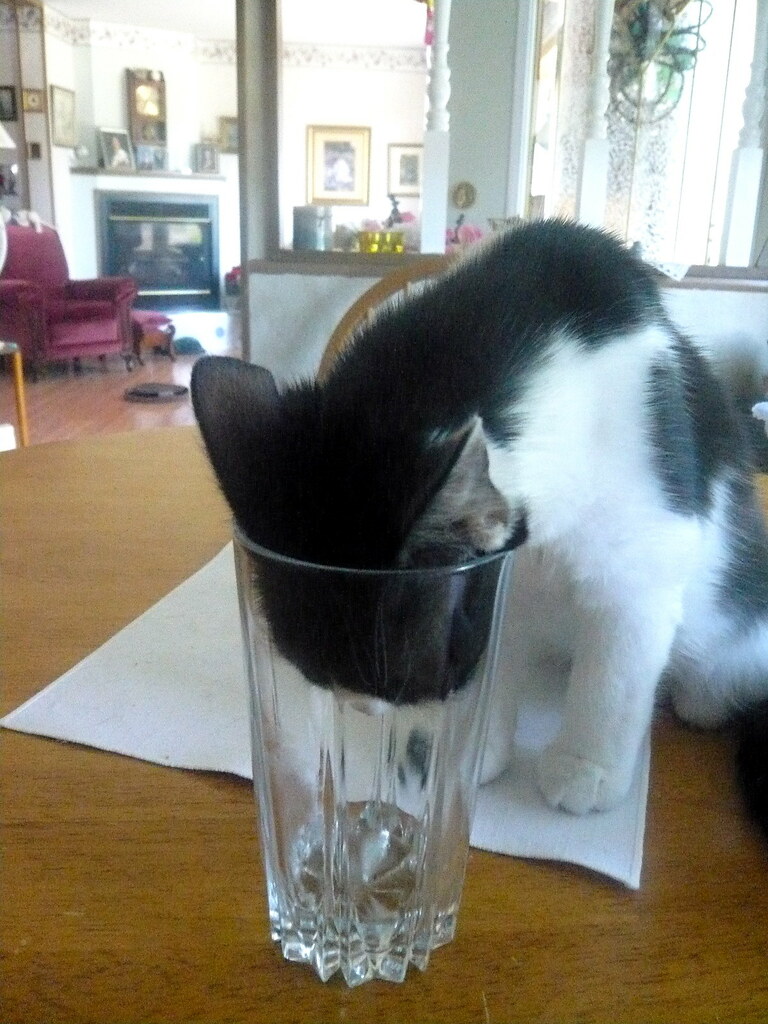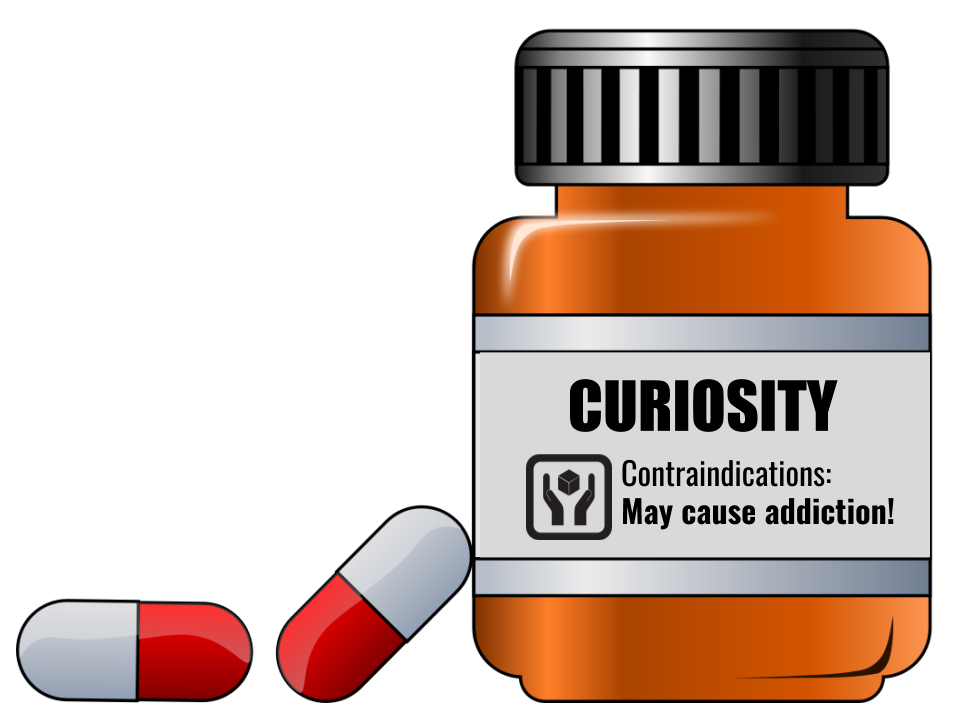POSTS
On cultivating (and reining) curiosity
by Luis P. Prieto, - 9 minutes read - 1802 wordsOne would think that research, as the pursuit of new knowledge, is mostly based upon curiosity. However, the daily grind of research life can erode that sense of excitement students have about delving into the unknown. In this post, I explore the role of curiosity in doctoral studies, and look at a few practices and tricks to keep the flame of curiosity alight (without burning the village!).
I have been a bit depressed lately. And for no particular reason: I have a good research job, I’m working with a lot of smart people, I’m doing my tasks (without getting too overwhelmed by them). Yet, it doesn’t feel nearly as fun as it did in the past. For instance, during my Ph.D., I was sometimes having a blast just reading some random papers! Then it struck me.
How long has it been since you learned something new?
People have different motives to get into a Ph.D.. I don’t know about you, but I really enjoy learning about stuff. Understanding something that I did not understand. Finding an explanation for odd things that I observe around me (what makes some people a joy to collaborate with, and others a pain?).
I am not alone in this: curiosity is related with our sense of autonomy as doctoral students (which is considered the most important factor in achieving and sustaining intrinsic motivation and completing the Ph.D.). And one way to support this autonomy is to enable students’ “curiosity-based explorations”. But… is curiosity always good? or is it dangerous, as in“curiosity killed the cat”? Are there healthy ways to cultivate it during the Ph.D.? Let’s get the basics out of the way first.
What is curiosity?
In common parlance, we could define curiosity as the strong desire to learn or know something. Curious people “ask questions, manipulate interesting objects, read deeply … and persist on challenging tasks”. There are multiple theories and models of curiosity: for example, some researchers have tried to measure it as a personal trait (am I a curious person in general?); others as a state (am I curious now about this?).
There is also a kind of ambivalence in terms of whether it is a positive or a negative thing. On the positives, curiosity activates the brain in a way that prepares it for learning and remembering (both about the object of curiosity, and unrelated stuff happening in that moment). It also has other benefits related to exploration: it gives us an increased sense of self, and protects us against the distress we feel when we try new things or step out of our comfort zone. Furthermore, there are many studies linking curiosity and wellbeing: curious people tend to report greater psychological wellbeing, have longer life spans, are more reactive to events that offer opportunities for growth, and perceive greater meaning and purpose in life. Awesome, right?
Unfortunately, there are also downsides to it: it is known to be a fleeting emotion that very quickly disappears. It is sometimes felt as a negative emotion (e.g., seeking information out of frustration at not knowing). And, most importantly, it can become an addictive behavior, which has been linked with poor impulse control, which in turn is related with all sorts of bad things in life. Thus, it seems that curiosity can be a very nice and useful emotion… in moderation.
Curiosity in the Ph.D.
Curiosity has always played a role in research and innovation: one can think of the many curiosity-based discoveries (as in, completely useless at the time) that afterwards had a huge impact on science and technology. Innovative organizations are known for leveraging the curiosity of their members. For instance, Google’s policy of leaving employees 20% of their time for side projects, or their 70-20-10 rule for how to distribute resources to ensure innovation (10% of resources for “blue sky” projects unrelated to the company’s core business). In areas where we need to generate new knowledge and innovate (like research), curiosity has to be sustained…
… but also reined! As Inger Mewburn mentions in her online course “Surviving the PhD”, there is a big dark side to curiosity: information addiction. This is especially common when doing a literature review: the fear of missing out some crucial study, the urge to “just find another paper”… we have all been there, because it is a really satisfying way to procrastinate! And, very often, we don’t even take advantage of the papers we find, since we get hooked to the search, not the actual reading. This even has a name: Obsessive Article Collecting (OAC) syndrome.
In short, it seems that curiosity in the Ph.D. is a remedy that comes with a lot of caveats. Students should cultivate it, but in moderation. And supervisors probably should keep an eye on this too. Can we find the tricky balance between warning students when we think the current exploration is unlikely to be productive, and blunting curiosity altogether?
Practicing curiosity
I still have not mastered this goldilocks balance of “just enough” curiosity, neither as a researcher, nor as an advisor of researchers. Yet, there are a few practices that I’ve found helpful to develop, sustain and rein curiosity:
- Have a list of curiosities and learning projects. If curiosity is the addiction to acquire new knowledge, it makes sense to separate the impulse (I realize I want to know X) from the response (I go down the Google Scholar rabbit hole for the next few days). People that are addicted to buying stuff sometimes keep a “quarantine shopping list”: when they get the idea to buy something, they commit themselves to not buy it immediately, and add it to the list. After, say, 3o days, if they still want to buy it, they buy it. However, most of the time the urge to buy recedes, they forget the object or realize they don’t really need it. Similarly, I keep a list of “things I’m curious about” and other learning projects that come to my mind. Every time I catch myself thinking “oh, I should learn more about [something]”, I commit to not follow through (unless it is really central and necessary to what I’m doing right now). Only days later, when I have a free time-slot or I want to spice up my intellectual life a little, I go back to the list and have fun learning stuff! As of this writing, my list contains more than 30 such projects, both research-related (e.g., learn more about single-case research designs) and completely random (how do cooperative companies and business models work?).1
- Timebox curiosity. Maybe you noticed the word “time-slot” in the previous paragraph. During work hours, never give in to curiosity without a fixed time limit2. Rather, you can say: I will learn all I can about this during two pomodoros. Or, if you are using your calendar to avoid to-do list overwhelm, you can allocate a free 2-hour slot for it in your calendar, once all the other more important stuff has been allocated. You get the idea.
- Write down what you learned. Another trick to slow curiosity down without killing it, is to take some time at the end of the “curiosity timebox” to write down a few take-aways. This is especially useful in literature review frenzies: For each paper you read, jot down something in your reference manager, research journal, or wherever you organize your information. This will help fix what you read in memory, and it may save you from re-reading the paper next time you come back to it.
- Friday experiments. This practice I learned from my friend (and researcher) Kshitij Sharma, although I don’t know if he invented it himself. In brief, it consists on keeping your Fridays free to plan, conduct and analyze experiments or studies that are not at the center of your research. You can think of it as the academic version of Google’s “20% for side projects” policy. This works especially well if you do it collaboratively with other people in your lab or department. While this can seem idle inefficiency, it can be tremendously productive. Several of my papers on teacher eye-tracking studies have their origin in one such fun collaboration I did with Kshitij back when we were labmates in Switzerland.
- (For supervisors) Keep a curiosity-friendly atmosphere in the lab. The practices above are nice, but sometimes our environments do not really encourage such explorations. If a lab/department frowns upon the occasional new method or inter-disciplinary tangent, curiosity and creativity can quickly suffocate. In their advice to encourage intellectual adventurousness in doctoral research, Imperial College London recommends supervisors to create a lab culture that is structured (clear objectives, deadlines, timetables), but also safe to voice ideas; where there are no silly questions, and informal communication happens easily. Take a look at it for more ideas on how to achieve this.
- (For supervisors) Motivational interviews. Some researchers suggest that curiosity could be used clinically against demotivation (due to curiosity’s links with wellbeing). For instance, Kashdan & Silvia suggest the use of motivational interviews, in which a counselor uses empathic listening and the eliciting of self-motivating statements, to prompt people to change their behavior. This technique’s emphasis on helping people find their own reasons to do things (vs. imposing what they should be doing) seems like a good match for PhD supervisors trying to help students find their intrinsic motivation – which is crucial in persisting and completing a Ph.D.3. However, this is a hypothesis, not empirically-backed advice, so take this idea with a pinch of salt!
Back to my own demotivation in recent times, I have to say that I had a blast learning about curiosity, through some “timeboxed curiosity” (I dedicated no more than four hours over three days to read about this topic). Also, I am starting to think about good ideas for “Friday experiments”…
What about you? Are you “addicted to finding papers”? What curiosity-based practices do you have in your daily life? How do you keep your curiosity under control? Let me know in the comments below.
-
Indeed, this very blog sprung out from one such projects. I had the curiosity to see know more about [the effects of a Ph.D. on wellbeing](ref first post)… and here we are! ↩︎
-
Of course, with your free time, do as you please! ↩︎
-
As anecdotal evidence backing this idea, many of the best supervisors I’ve met in my career as a researcher, do seem to be good at empathic listening and asking questions to help you find out your own reasons to do things (vs. telling you what to do right away). This was sometimes very annoying as a Ph.D. student. Now, after the doctorate ended, I appreciate the value such advising style had. ↩︎

Luis P. Prieto
Luis P. is a Ramón y Cajal research fellow at the University of Valladolid (Spain), investigating learning technologies, especially learning analytics. He is also an avid learner about doctoral education and supervision, and he's the main author at the A Happy PhD blog.

